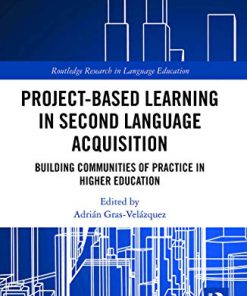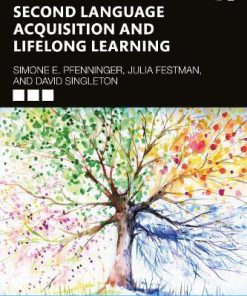The Routledge Handbook of Second Language Acquisition and Neurolinguistics 1st Edition Kara Morgan-Short
$50.00 Original price was: $50.00.$25.00Current price is: $25.00.
This completed downloadable of The Routledge Handbook of Second Language Acquisition and Neurolinguistics 1st Edition Kara Morgan-Short.

Instant downloaded The Routledge Handbook of Second Language Acquisition and Neurolinguistics 1st Edition Kara Morgan-Short pdf docx epub after payment.
Product details:
- ISBN-10 : 1003816460
- ISBN-13 : 9781003816461
- Author : Morgan-Short, Kara
Table of contents:
1 Second Language Acquisition and Neurolinguistics: A Synthesis of Perspectives
Part I Methodological Approaches for Neurolinguistic Examination of Second Language
2 Using Time-Based Electroencephalography to Investigate Second Language
3 Using Quantitative Electroencephalography (qEEG) to Investigate Second Language
4 Using Functional Neuroimaging to Investigate Second Language ORGANIZATION
5 Using Structural Neuroimaging to Investigate Second Language
6 Using Non-Invasive Brain Stimulation to Investigate Second Language
Part II The Neurolinguistics of Second Language Learning, Representation, and Processing
7 The Neurolinguistics of Second Language Phonology: A View of Phonemic Contrast
8 The Neurolinguistics of the Second Language Lexico-Semantic System
9 The Neurolinguistics of the Second Language Morphological System: The Role of
10 The Neurolinguistics of the Second Language Syntactic System
11 The Neurolinguistics of the Second Language Pragmatic System
Part III Neurolinguistic Theories and Models of Second Language
12 How the Declarative and Procedural Memory Brain Circuits Support Second
13 Neurolinguistic Methods and Generative Approaches to Second Language Acquisition
14 Second Language Acquisition and Neuroplasticity: Insights from the Dynamic Restructuring Model
15 Linguistic Relativity and Second Language: How learning a Second Language May
16 Neurocognition of Social Learning of Second Language: How Can Second Language
Part IV Underlying Factors and Individual Differences in the Neurocognition of Second Language
17 Genetic Factors in Second Language Neurocognition
18 Age and Proficiency in Second Language Neurocognition
19 De-generacy as an Organizing Principle of Bilingual Language Processing: Evidenc
20 Factors Accounting for Individual Differences in Second Language Neurocognition
Part V Second Language in Relation to the Neurocognition of First Language and
21 Cross-Linguistic Transfer in Second Language Neurocognition
22 Second Language Neurocognition and First Language Attrition
23 First Language/Second Language Crosslinguistic Influence on Third Languag
Part VI The Neurocognition of Second Language Learning: Mechanisms and Contexts
24 The Neurocognition of Prediction in Second Language Processing and Learning
25 Feedback in Second Language Neurocognition
26 Memory Consolidation in Second Language Neurocognition
27 Context of Learning in Second Language Neurocognition
28 Embodied Second Language Processing and Learning from a Neurocognitive
Part VII Selective Topics in the Neurocognition of Second Language
29 The Neurocognition of Foreign Accent Perception
30 Decision Making and Second Language Neurocognition
31 Cognitive Control in Second Language Neurocognition
32 The Neurocognition of Child Second Language Development
33 The Neurocognition of Learning a Second Language in the Visual-Manual Modality
34 Aphasia, Rehabilitation, and Second Language Neurocognition
People also search:
should second language be mandatory in schools
should learning a second language be mandatory
what is second language acquisition support
what are the stages of second language acquisition
which of the following statements about second-language acquisition is correct
You may also like…
Politics & Philosophy
Routledge Handbook of Public Diplomacy, Second Edition Nancy Snow
Education Studies & Teaching - Teaching - Reading & Language
Education Studies & Teaching - Teaching - Reading & Language
Education Studies & Teaching - Teaching - Reading & Language
Project Based Learning in Second Language Acquisition 1st Edition Adrián 0429854714 9780429854712
Politics & Philosophy - Social Sciences
Second language acquisition 1st Edition by Slabakova 0191072192 9780191072192
Reference - Writing
Routledge Handbook of Arabic Second Language Acquisition First Edition Alhawary
Politics & Philosophy
Linguistics - Linguistics
Second Language Acquisition and Lifelong Learning 1st Edition Singleton












